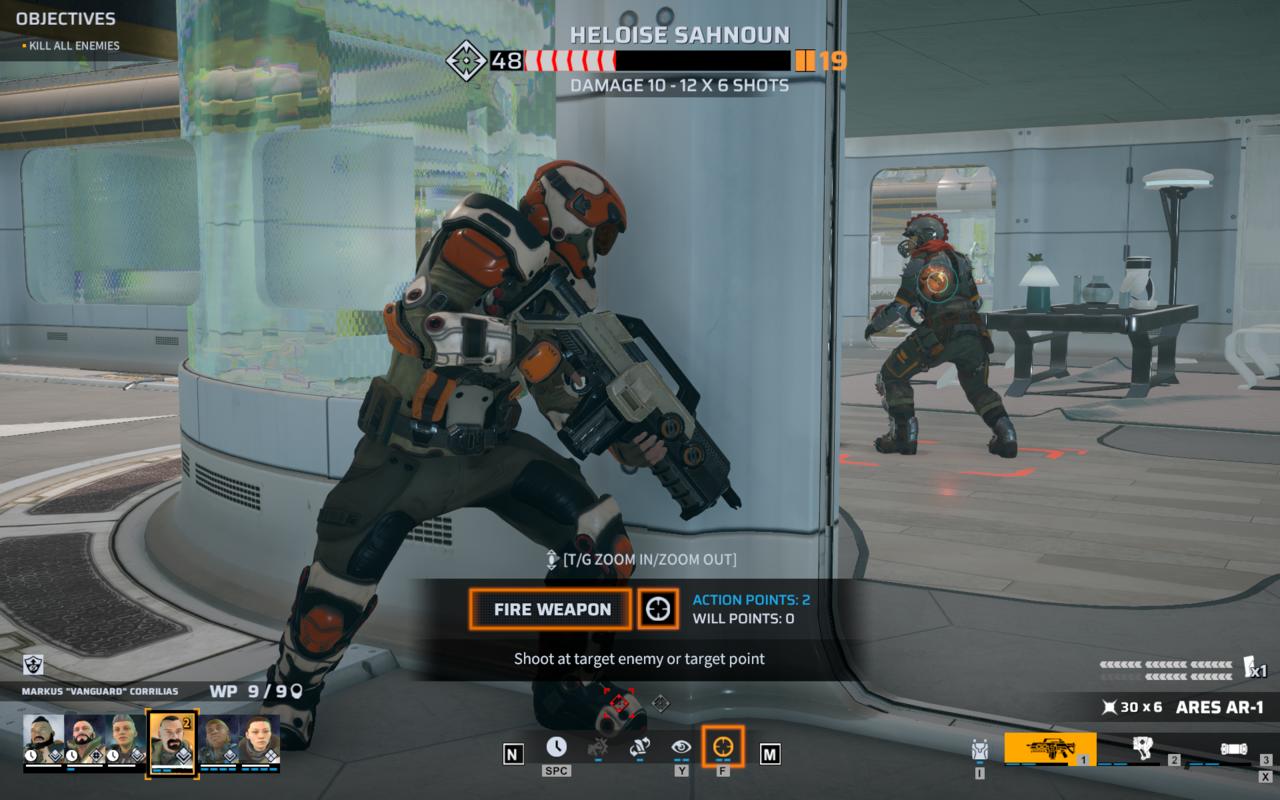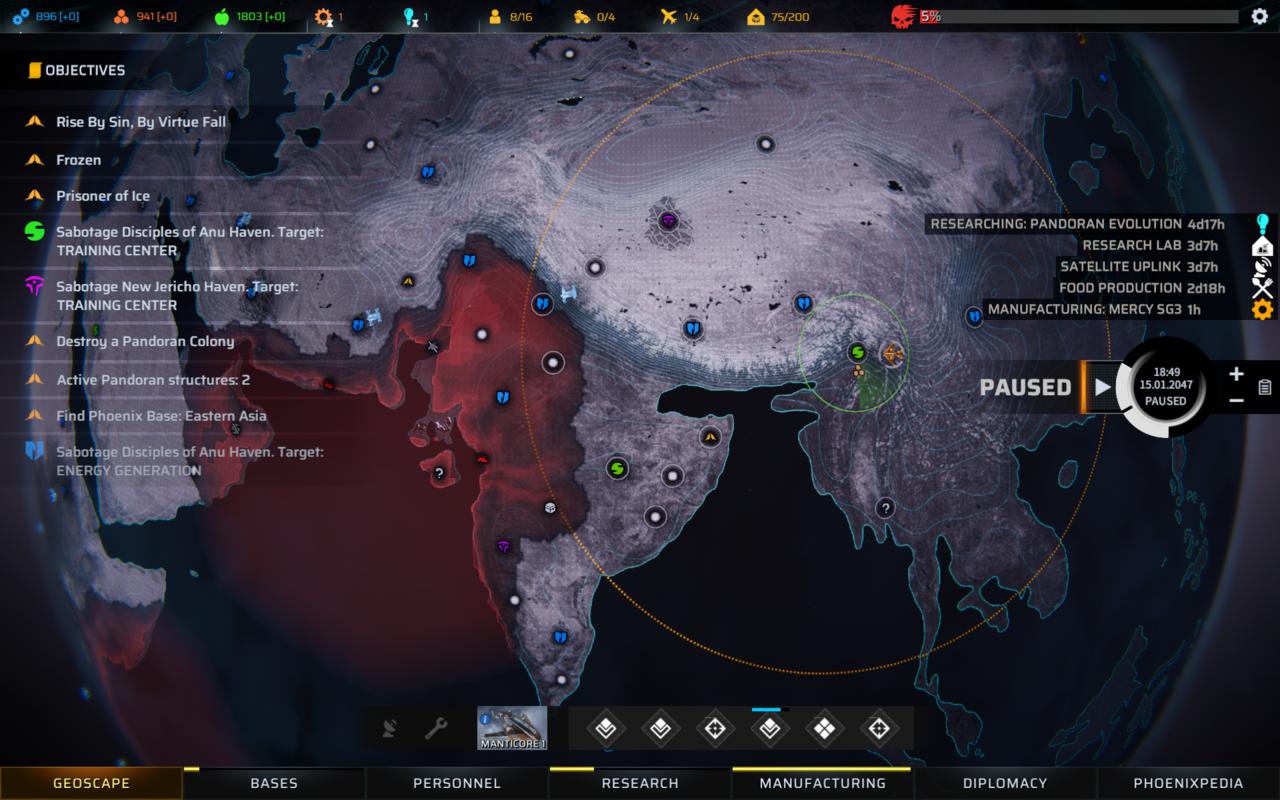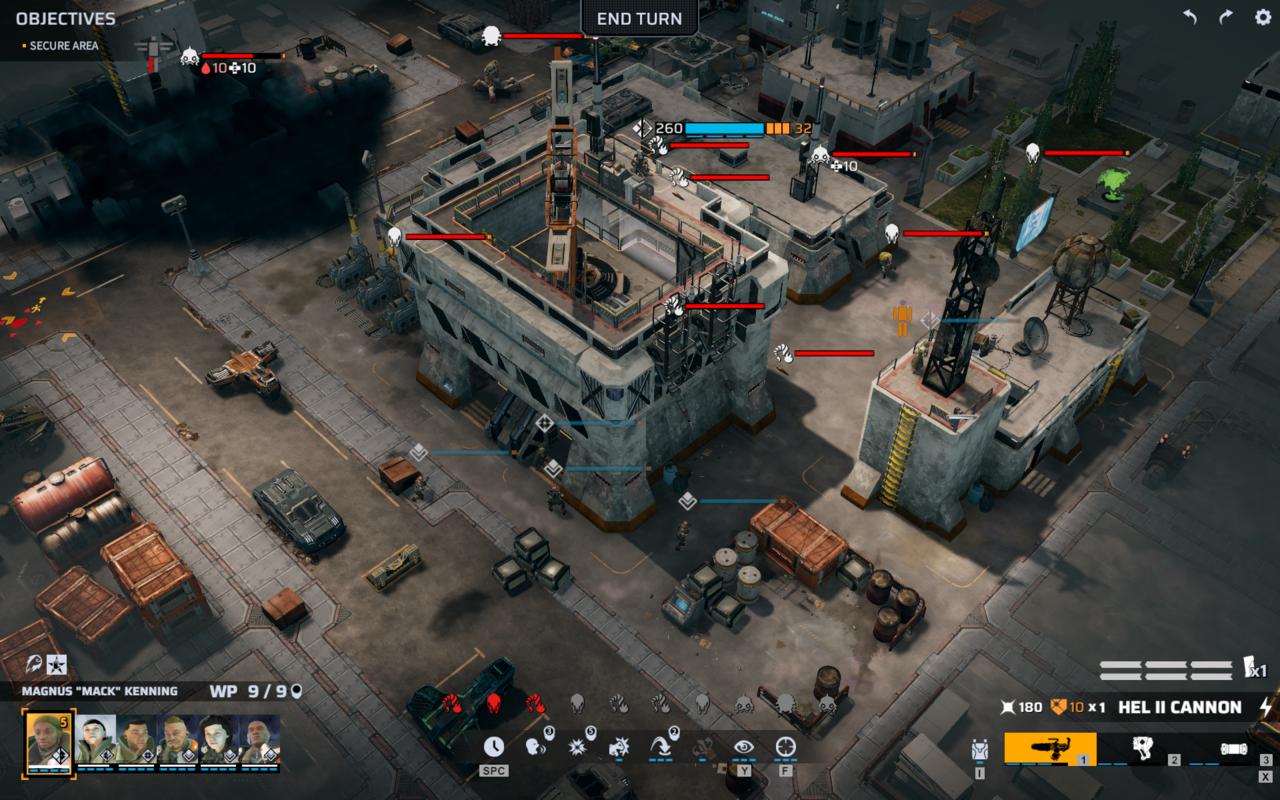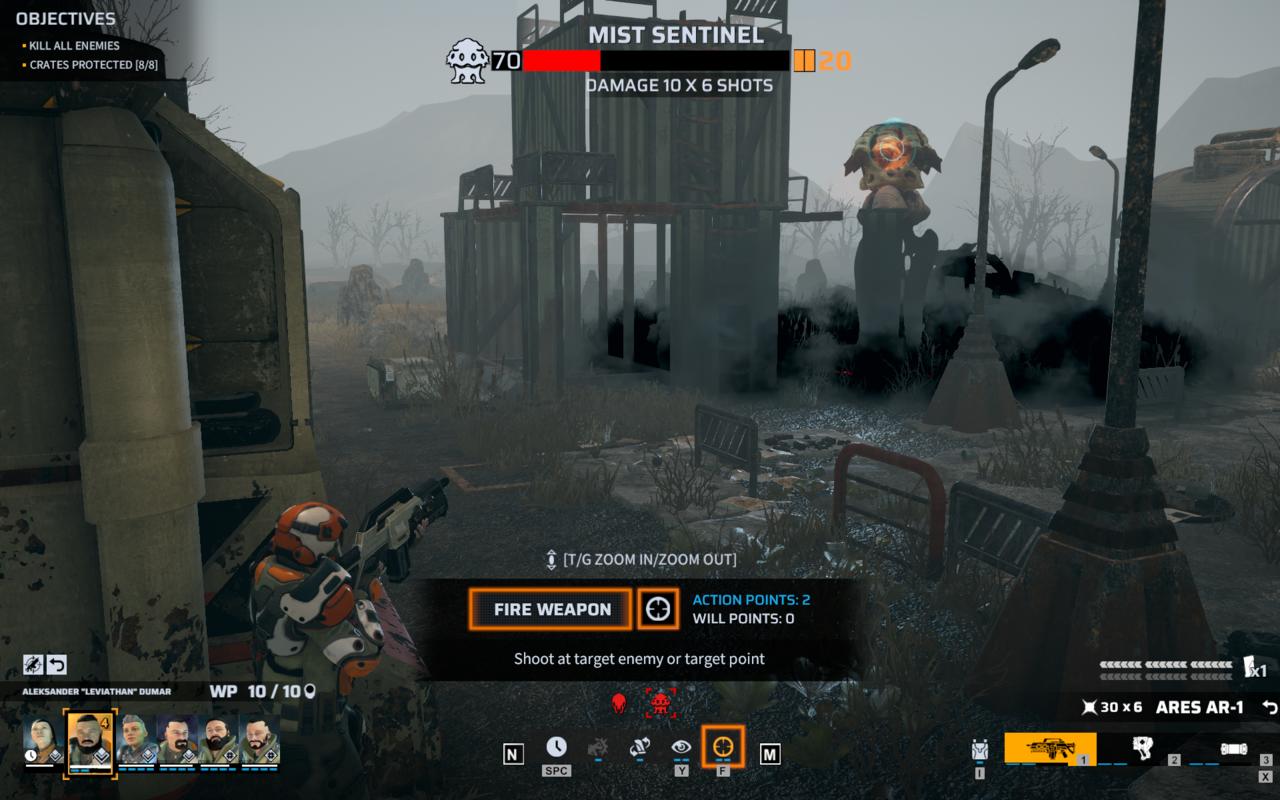You've earned the right to mess with the XCOM formula when you're the person chiefly responsible for it. Julian Gollop was the co-lead designer on the original XCOM: UFO Defense in 1994, and Phoenix Point, from Gollop's new studio Snapshot Games, is a self-described spiritual successor to XCOM. At first it feels all too familiar: You play the eponymous private military organisation defending Earth from an alien threat, patching holes in the sinking ship via tactical combat and strategic upgrades. But Phoenix Point reinvents the formula in both big and small ways, sending changes rippling across the strategic map and tinkering with the nuts and bolts of close combat. Not every new idea is equally successful, though many of them are welcome, and in sum deliver a refresh that points the genre in an exciting new direction.
As with the first XCOM sequel, Terror from the Deep, the threat here comes from the ocean. A mysterious mist is creeping at the coast, luring people into the sea and returning them as Lovecraftian fish monsters--all scaly-skinned, newly betentacled, and packing crustaceous heat, an army of soldier crabs. Phoenix Point is joined in defending the planet by three ideologically distinct factions: New Jericho want to destroy the aliens, the Synedrion want to coexist with them, and the Disciples of Anu want to synthesize human and alien life. Many of the missions you undertake will inevitably involve offending at least one of the factions and so, no matter how impartial you to try to remain, eventually you're going to have to choose sides. It's a depressing, relevant example of humanity's failure to come together in the face of existential catastrophe.

On the world map, presented here as it was in the original XCOM as the Geoscape, a rotatable globe pockmarked with scouted points of interest, the mist is a red miasma slowing enveloping the planet, a Doomsday Clock ticking closer to midnight one continent at a time. This strategic layer runs in real time as your Phoenix squads fly from one flashpoint to the next, while you work on increasing base capacity, manufacturing new arms, and researching new military solutions. All the while the red mist spreads, escalating the danger as new nests appear and strangling your ability to fight back as faction outposts fall. It's the perfect visual representation of the odds you're facing and the seeming inevitability of defeat. Despite the abstraction, it's genuinely painful to see the mist consume a settlement you had heroically rescued only days earlier.
At a strategic level, Phoenix Point wants to let you pick your own path. The Geoscape is at the start shrouded in the fog of war. Through scanning nearby areas and aerial exploration it soon becomes a sprawling, cluttered morass of multi-coloured icons describing your own bases, factional havens, key quest destinations, potential scavenging sites, neutral colonies, alien nests, and other unidentified locations. You have considerable freedom in navigating your own route across this world. You can basically travel wherever you like and, when you arrive, you can usually decide whether or not to take on the mission you've encountered. Want to save this low-threat scavenging mission for some new recruits further down the line? Just hit abort and fly your veteran squad into more dangerous territory.
It's liberating, at least early on, as you jet around, scouting the map, picking and choosing your next mission. Yet by the time you have multiple squads traversing the globe, and you're juggling a handful of different flight paths across a Geoscape that has exploded into a galaxy of competing icons, that liberation is swamped by confusion. It's not that it's hard to tell what you could do next--important story missions and factional quests are highlighted--it's more that there are so many things to do that it's easy to lose yourself in endless distractions or worse, drown under an overwhelming wave of map markers.
Indeed, the chaotic, confounding clutter of the Geoscape is emblematic of some wider interface issues. The research screen throws every possible tech into a long list with scant attention given to how useful it might or where it might lead. There's a research order function, but you can only send one tech to the front of the queue, not adjust the order further down. Inventory management is a mess when it comes to comparing different weapons to equip and deciding which new gear to manufacture.

The the freeform structure of the Geoscape guarantees no two campaigns will play out alike. What those campaigns have in common, however, is a mentally exhausted player. You're pulled in so many directions. Two colonies are under attack in India but an alien nest needs eradicating in Malaysia. New Jericho wants to assist its research in China but the Synedrion wants you to sabotage Jericho's research lab in Australia. And all the while there are dozens of unexplored spots in Africa that you haven't even visited yet. But it’s worth battling through the stress and clutter to get to the combat.
What typically awaits at a destination is a bout of small-scale, turn-based combat. Occasionally you will stumble upon a simple narrative event that will give you a decision to make and readjust your resources or factional reputation in response, but for the most part, you will find yourself engaged in a firefight.
At a combat level, Phoenix Point is all about tactical flexibility. There are four primary classes--heavy, assault, sniper, and melee--but perk trees are semi-randomly rolled for each soldier, and you can also allow them to multi-class. This means no two soldiers have to be the same, and you have a lot of room to tailor each six-person squad to suit your preferred style of play. My first heavy was the typical tank character, lots of health and a big cannon, but later adopted a secondary class and would jet pack onto a roof and launch a few grenades to destroy the enemy's cover before switching to a sniper rifle to finish them off.
Many of the man-made structures on a map can be damaged and destroyed. Grenades and other heavy weapons can remove that pillar you were relying on for cover. Even the humble pistol can shoot through a thin wall, hitting anything that was on the other side and leaving them more exposed for a follow-up shot. My jet-packing heavy nearly bit the dust one time when the roof they'd landed on gave way in an explosion, dumping them into the room below where a nasty crab creature lurked. Fortunately, on the next turn, they were able to jetpack to safety out of the newly renovated ceiling.

When you take a shot, you aren't given a percentage chance to hit while some dice are rolled to see if you did any damage. Instead, bullet trajectories are said to be physically simulated, meaning if you can see something, you can hit it. There are two ways to take a shot. The default has you aiming generally at the centre of the target's mass. Take an aimed shot, though, and you're given a first-person view where what you point at is what you'll shoot. You can target an enemy's limbs or their weapon or even another object in the environment, and for the most part you're likely to hit it. There is a degree of fuzziness here--you'll see the crosshair surrounded by two rings, the inner one indicating where most of the shot(s) will hit and the outer accounting for any remainder--and the accuracy and damage of any particular shot is still affected by the weapon's range and other stats. But it's very satisfying to destroy an enemy's shield with one well-aimed sniper shot, then follow it up with an assault rifle round to the now-exposed head.
The ability to target specific limbs becomes vitally important as more diverse enemy types start populating the battlefield--you'll very quickly need to worry about more than those wielding shields. The sheer variety of enemy types and behaviours issues an interesting challenge every turn and have you constantly thinking about cover, height, range, support, supplies, teamwork and priorities. In addition, every enemy is susceptible to a well-aimed shot that cripples a specific limb, thus slowing its movement, nullifying its special ability, destroying its weapon or inhibiting its mode of attack. As a result there's so much more to think about in combat than just methodically moving your squad forward and shooting the enemy when they appear.
The flexibility is heightened by the action point system that provides more options than just moving and shooting. Every soldier has 4 APs, but different weapons and abilities use different amounts, and the ground a soldier can cover in 1 AP is affected by their speed stat. Two of my assault troops worked in perfect tandem: one was a shotgun expert with the speed to close quickly on their target and use a debuff that reduced the APs of nearby hostiles, the other hung back a bit, offering support with their longer-range rifle, entering overwatch every turn thanks to its cheaper cost, and running in with a medkit if the other took damage. Both characters started out the same, but the wildly different level-up choices I made for them, coupled with the capacity to spend their APs every turn on a mostly unique suite of options, meant they felt distinct--like characters whose behaviour I had authored and who I was personally responsible for. I'd invested in their stats, tweaking them in parallel to become complementary, and as a result, had become emotionally invested in them.

When you lose a soldier it hits hard, of course. Any soldier that goes down in a fight is permanently dead, and you have to recruit a novice to replace them. Yet while your emotional investment can never be fully recovered, the stat investment can be at least partially reclaimed. This is because experience points earned from completing missions is awarded to each individual soldier who participated and to a common pool. You're free to dip into this pool whenever you wish--maybe you just need a few more points to unlock that next tier perk you've had your eye on--but my strategy was to save the pool for new recruits. Every time I hired a new soldier I was able to level them up several times before they had pulled a trigger. It's a clever, flexible system that means veteran troop losses are a setback, but never a debilitating or irredeemable one.
The tactical combat doesn’t suffer from the clumsy interface design that plagues the strategic layer. There are convenient overlays informing you of movement ranges, AP consumption, and targeting possibilities, it’s easy to scroll between different terrain heights, and everything requires deliberate selection so you don’t end up performing an action you didn’t intend. However I did very, very occasionally run into a problem where the overlay would tell me I had line of sight from a certain tile if I moved there, only to move there and discover I couldn’t actually see the enemy. And after dozens of hours of play, I still have no idea why my soldiers would sometimes start a new mission with their weapons needing reloading, nor indeed how to reload them when not in a mission. But these feel like trivial concerns in the grander scheme of what is an overall robust combat engine.
Phoenix Point has plenty of bold new ideas for the XCOM genre, but not all of them have the same level of shine. It can feel a bit unwieldy at times, a bit less user-friendly than you'd hope. But it's a game that feels more concerned with experimentation than perfection, that's more interested in discovering new paths to take than walking one that's already well-trodden. As a hybrid tactical/strategy game, it's dynamic and deep with the occasionally disorientating misfire along the way. As a contribution to the genre XCOM first defined, it's a well-aimed shot.



















